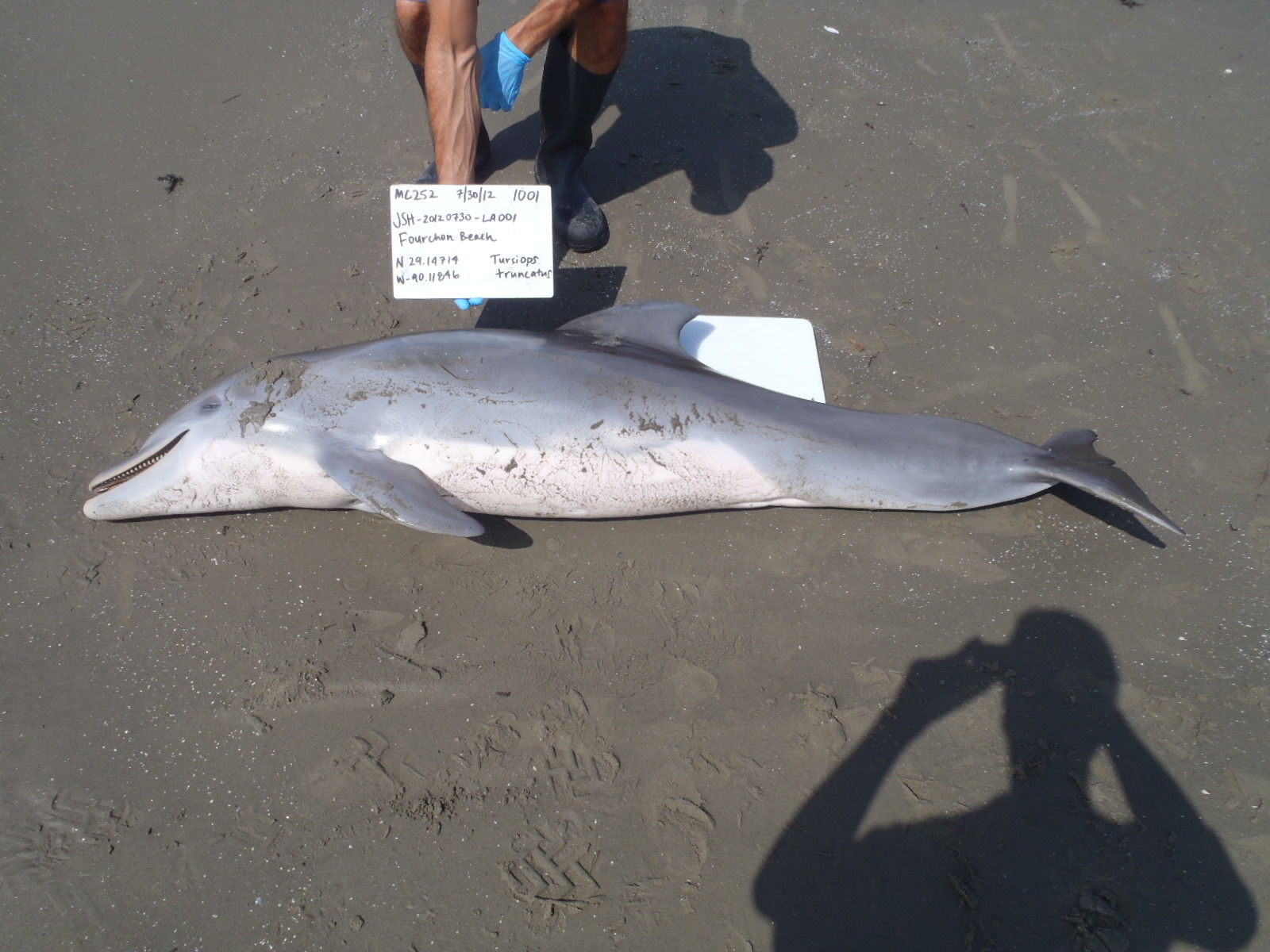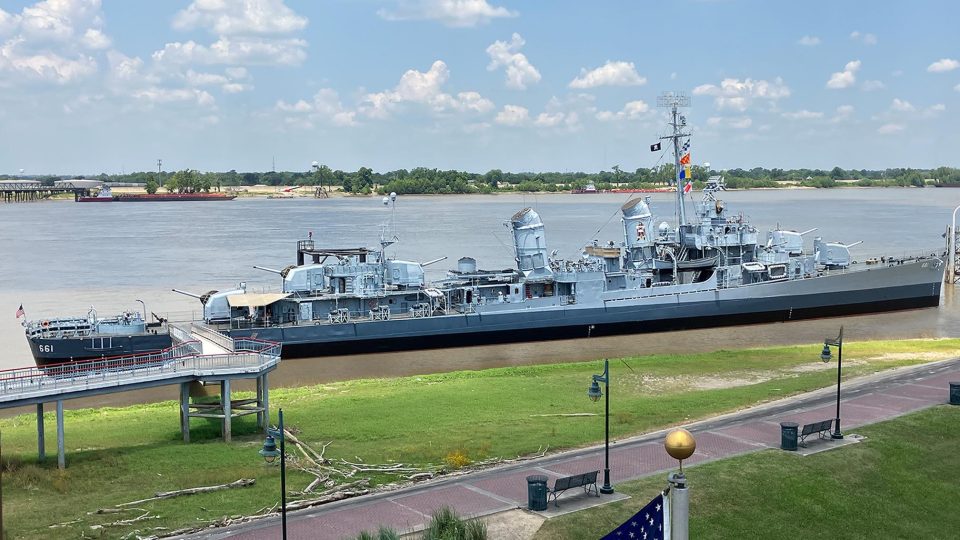
House budget spares higher ed, but slams state’s uninsured
May 27, 2015OUR VIEW: A special salute to our troops
May 27, 2015A peer-reviewed study by NOAA scientists offers the first conclusive determination that record die-offs of dolphins in the Gulf of Mexico are related to the 2010 Deepwater Horizon oil spill.
BP, the company that legally responsible for the spill, questions the findings, suggesting that they are best circumstantial. Company officials note that no physical evidence exists showing a connection between dolphin deaths and oil released by the ill-fated Macondo well.
The April 20, 2010, Deepwater Horizon explosion 60 miles off the Louisiana coast killed 11 workers. Crude oil from the related spill gushed uncapped for five months thereafter, closing down fisheries throughout the northern Gulf of Mexico, impacting thousands of jobs and affecting the health of workers hired to clean up the spill.
Hints of major effects on marine mammals have drawn attention in past years, but none with the specificity of this newest study, released in the scientific journal PLOS ONE.
“This is the latest in a series of peer-reviewed scientific studies, conducted over the five years since the spill, looking at possible reasons for the historically high number of dolphin deaths that have occurred within the footprint of the Deepwater Horizon spill,” said Dr. Teri Rowles, a veterinarian who is one of the paper’s 22 contributing authors. Rowles is the chief of NOAA’s Marine Mammal Health and Stranding Response Program. “These studies have increasingly pointed to the presence of petroleum hydrocarbons as being the most significant cause of the illnesses and deaths plaguing the Gulf’s dolphin population. This study carries those findings significantly forward.”
The study’s abstract states that 2010 and 2011 had “the highest annual number of stranded dolphins since Louisiana’s record began, and 2011 was one of the years with the highest strandings for both Mississippi and Alabama.”
Causes of death during the period studied have been related to thinned and shrunken adrenal cortexes and occurrences of bacterial pneumonia.
During a teleconference last week, NOAA scientists said that while both conditions occur in dolphin species, they have not been seen in the concentrations of events in the dolphin that were studied. Both live and dead dolphins were included; control groups of dolphins for study were from unaffected waters in the eastern Gulf and the south Atlantic.
The study is particularly significant because it is part of the National Resource Damage Assessment related to the Deepwater Horizon disaster, the official fact-finding operation following the spill.
In the past BP has said similar reports on marine mammal deaths, bird deaths and insect disappearances did not carry credible weight because they were not part of the official Damage Assessment process.
Geoff Morrell, BP’s senior vice president for U.S. communications and external affairs, issued a statement after NOAA made the dolphin report public.
“The data we have seen thus far, including the new study from NOAA, do not show that oil from the Deepwater Horizon accident caused an increase in dolphin mortality,” Morrell said. “This new paper fails to show that the illnesses observed in some dolphins were caused by exposure to Macondo oil. In fact, numerous studies conducted over the last several decades have shown that respiratory illness – one of the conditions cited – is among the most common causes of death for bottlenose dolphins, including a study where half of the dolphins examined had pneumonia.”
Morrell based that contention on a study titled “Thirty year retrospective evaluation of pneumonia in a bottlenose dolphin Tursiops truncatus population” which appeared in the Journal of Diseases of Aquatic Organisms dated July 25, 2012.
“Based on a review of available literature, we are unaware of any toxicological studies linking lung disease in bottlenose dolphins to exposure to oil or other environmental contaminants,” Morrell said. “According to NOAA, the Gulf “unusual mortality event” began in February 2010, months before the spill. Even though (that) may have overlapped in some areas with the oil spill, correlation is not evidence of causation.”
Oil was not specifically identified as the cause of death in any of the 130 dolphin autopsies conducted by government veterinarians.
Hundreds of additional dolphin autopsy reports were not released by the government to BP despite what Morrell said were “numerous Freedom of Information Act requests.”
“Just a small sample set of the dolphins, 46, were used for this study,” Morrell said.
Katy Colgrove, the lead pathologist who worked on the study, said that the timing, location and nature of the lesions on dolphins in the study group “support that contaminants from the Deepwater Horizon oil spill caused these lesions and contributed to the high numbers of dolphin deaths within this oil spill’s footprint.”
“During our evaluation we found that dolphins dying after the oil spill had distinct adrenal gland and lung lesions … thinning of the adrenal gland cortex was an unusual abnormality for us … Increased deaths occurred in areas most heavily oiled by the Deepwater Horizon oil spill.
The study notes that a spike in dolphin deaths began prior to the Deepwater Horizon disaster. But those deaths, the scientists said, were mostly limited to Lake Pontchartrain and were determined to have been caused by other factors such as cold temperatures.
Pregnancy, cold temperatures and infections are among the conditions whose effects are enhanced in dolphins exposed to oil, the scientists said.
The greatest concentrations of stranded dolphins during the study period – June to December of 2011 – occurred in Louisiana’s Barataria Bay; In Louisiana, pockets of stranded dolphins were also found off the coasts of Terrebonne and Lafourche.
Scientists described the process that allows for injury to dolphins in an oiled environment.
When they surface to breathe aromatics – the compounds within petroleum that are in the air – are taken into their systems because they are so very close to the oiled surface. In addition, when dolphins take breaths through their blowholes they hold the air for long periods of times as part of the normal respiratory process, increasing their vulnerability.
Scientists also said in response to questions from reporters that the effects of the spill are not completed; different animals whose physiologies are affected by the oil exposure will exhibit evidence of the effects at different times, and an untold number of dolphins vulnerable to infection and other stressors, they said, are likely still in the Gulf.
Also, the number of dolphins that may have died is not truly reflected in the data for the report, as they are highly mobile, and many dolphin deaths would have gone undetected because their bodies were never found.
Responding to questions about the lack of hard evidence linking the dolphin deaths specifically to Macondo oil, Colgrove said that would be impossibile.
“Once oil gets into a dolphin it is rapidly converted into other compounds,” Colgrove said. “You couldn’t test for oil specifically anymore once a dolphin died.”
Researchers record data and photograph a dead dolphin that stranded along the Port Fourchon Louisiana coastline in July 2012 following the 2010 Deepwater Horizon oil spill.












